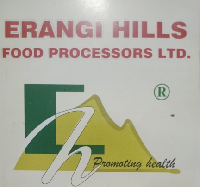Currently Empty: KSh 0.00

Blood is the red connective tissue that circulates in arteries and veins of humans and other vertebrate animals. It is a conduit in circulatory system, transporting nutrients to all the cells and waste product from the cells. It supports cellular metabolism by transporting synthesized molecules and waste products. Additionally, it transports molecules, such as hormones, allowing for communication between organs.
Blood is about 78% water and 22% solids by volume. The liquid part of it is called plasma which is mostly water 95% but also contains proteins, ions, glucose, lipids, vitamins, minerals, waste products, gases, enzymes and hormones. The cellular component of blood includes
- Red blood cells (erythrocytes)- it’s the most numerous of the components and make up 45% of total blood. Each drop contains millions of them. 1 red blood cell contains approximately 270 million hemoglobin proteins that contains the mineral iron, which when bound to oxygen turns red. The most vital duty of the red blood cell is to transport oxygen from the lungs to all cells in the body so that they can make energy via aerobic metabolism. The red blood cells live for about 120 days.
- White blood cells (leukocytes)- these are part of the immune system and survey the entire body, looking for foreign invaders to destroy them. They make about 1% of the blood volume. White blood cells live anywhere between 18 hours to 1 year.
- Platelets (thrombocytes) – these are fragments of cells that are always circulating in the blood in case of an emergency. When blood vessels are injured, platelets rush to the site of injury to plug the wound. Platelets have a life span of about 10 days only.
Blood is under a constant state of renewal and is synthesized from the stem cells residing in bone marrow. From the foods we eat, and the air we breathe, humans gain the materials needed to synthesize blood, build and maintain the body, thus making food an inevitable accompaniment throughout our lives.
When we eat food, it is broken down into nutrients during digestion. This is referred to as metabolism (a process by which your body converts what you eat and drink into energy). During this complex process, calories in food and beverages are combined with oxygen to release the energy the body requires to function.
Metabolism is categorized as: –
- Catabolism – referring to all processes involved in molecule breakdown (energy is released)
- Anabolism – referring to a process where bigger molecules are built (energy is consumed)
Symptoms of blood syndrome
Tremor, Muscle spasm, Loss of appetite, Fatigue, Faster or slower heart rate, Anemia, Trouble concentrating from lack of oxygenated blood, Shortness of breath, Growth retardation in children, Malaise or a general feeling of unwell, Loss of male stamina and Abnormal glucose metabolism
People can reduce the risk of blood syndrome by eating a well-balanced diet sufficient of these minerals
- Magnesium- aids in ATP synthesis and utilization of carbohydrates, lipids and proteins-present in nuts, vegetables, coffee and tea
- Iron – for DNA synthesis, good cell function- source is dehydrated spinach, moringa oleifera, stinging nettle and beans
- Zinc- assists in energy production, protein, DNA and RNA synthesis -source is pumpkin seeds, whole wheat, nuts and red meat
- Iodine-for making thyroid hormone- source dairy products
- Selenium- essential for thyroid hormone activity -source Almonds and Groundnuts
- Copper- for energy production and iron synthesis- source is wheat, sorghum and millets
- Manganese- for glucose synthesis and amino acids catabolism source- green tea, spinach
- Chromium- assist in insulin, carbohydrates, lipids and protein metabolism -source is whole maize and nuts
NB: There is no medication that can do as much for our health as the healthful foods we eat every day. By the same principal no medication is capable of completely compensating for the harmful effects of the unhealthful food we eat in an unbalanced diet.
Isaac Njiru Njeru
Food Technologist
Mobile No. 0722 561 495


